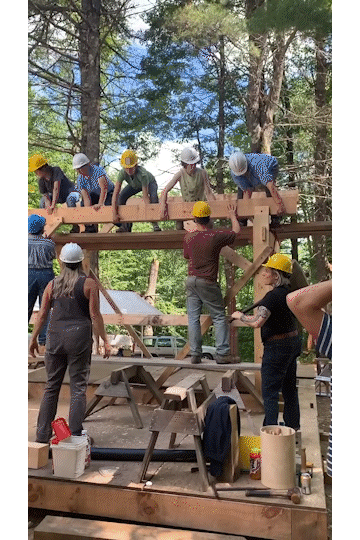Winter Happenings at Hammmerstone
Hammerstone Newsletter 1/31/2024
Online Shopping for used books and records is my winter vice!
My wood shop is uninsulated, so I don't do much woodworking in the winter. Without a project in hand, one of my favorite things to do on these long winter nights is put a record on and curl up with a book.
It seems silly, but I feel like at some point I kind of forgot just how much knowledge has been recorded in books. There’s this cultural notion now that we can learn anything on the internet. YouTube is excellent for many situations, but learning the theory of a craft — why we do things certain ways — isn’t one of them.
I love books that explain a certain woodworker's methods, like Tage Frid Teaches Woodworking, and books that offer a deep dive into one subject, like The Wood Joiner's Handbook and Handcrafted Doors & Windows. Just check out those space age windows! And the handcrafted wooden hardware! So much fodder for the creative imagination.
What's on your bookshelf? Always curious to know what you're curious about!
Happy Hammering!
Kimberly and The Hammerstone Team
What's In Your Toolbox?
Carpenter's Pencil
A carpenter’s pencil is one of those essential items that has a dedicated spot on the tool belt at all times: when it goes missing, its absence is noted immediately!
What makes a carpentry pencil different from a regular old #2? For one, the shape of its lead. Instead of being sharpened into a conical pointed tip, the wide lead of carpenter's pencil is sharpened into a chisel tip. This tip has a sharp edge with which to mark. This edge is perfect for lining up with tic marks on a tape measure.
The single point on a regular pencil wears down pretty quickly, especially on rough lumber. The chisel tip lasts longer because of its greater surface area. When it wears down, it's easy to touch up with a utility knife. We go into how to sharpen a carpenter's pencil to a chisel tip in our 2-Day Basic Carpentry Skills class.
The carpentry version of this recurring nightmare is showing up to the jobsite without a pencil. (Comic by Francis Bonnet)
Aaand as in all areas of carpentry, there are alternatives. Some people use a plain old mechanical pencil, which leaves a precise mark but breaks easily on rough wood. Another option is a marking knife (either western or Japenese style), which leaves an even finer line.
Some types of carpentry, like timber framing, require greater precision. Timber framed joints have no metal fasteners: the wooden mating surfaces lock mechanically! This is footage from an intro timber framing course I took a few summers ago - we built a 10x12' shelter for an outdoor earthen oven!
If the thought of all this precision gets your wheels turning, it might be time to try one of our woodworking classes: check out Kumiko, Parquetry, and Build a Box.
upcoming classes
Check out what we have coming up in the next few months!
That's all for now, but stay tuned for some
BIG tiny house updates in the next newsletter. Until then,
Hammer On!












